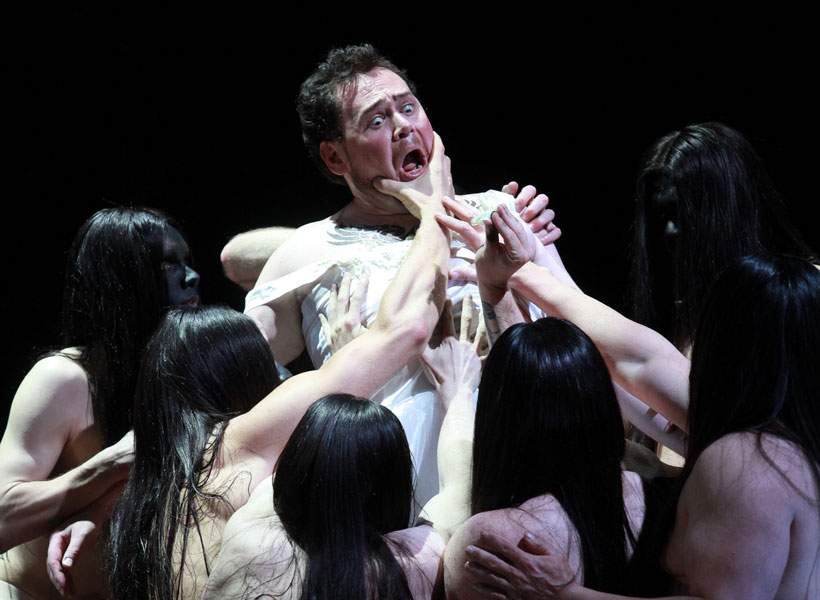The Flying Dutchman
Moody, intense and dramatic, The Flying Dutchman is an impressive spectacle and a musical masterpiece.
Overview
Moody, intense and dramatic, The Flying Dutchman is an impressive spectacle and a musical masterpiece. One of the most popular legends in history, The Flying Dutchman tells the tale of the cursed sea captain, doomed to sail his phantom ship across the world's oceans until he finds a faithful bride.
Thunder rolls in the distance. The white hand of the conductor starts a torrent of music that swells and breaks over the audience as they wait for the action to begin. Holed up in a futuristic impression of a ship's hull, Daland and his crew wait out 'the storm from hell'. Weary from their ordeal they lapse into sleep, dreaming of their women back at home and Daland of his daughter Senta. Cascading white fabric and tumbled chairs artfully articulate the stormy Norwegian seas which calm as the ghostly captain's phantom ship appears.
The Flying Dutchman slides into a sombrely lit dream scene and the sleeping crew awake to his presence. Seduced by the Dutchmans' riches, Daland willingly agrees to offer his daughter's hand to the mysterious stranger. Back in the 'real' world, the women of the village tease Senta for her strange obsession with an image of a mysterious man in black.
The intensity of Act one plateaus in Act two for the drawn out courting session between Senta and the Dutchman, but quickly picks up pace again in Act Three where the most exciting action happens. The dream sequence in the first act had a beautifully surreal quality to it and I particularly liked the way the image of the Dutchman was incorporated into the action.
The dynamic set and atmospheric lighting created a rich backdrop for the story. The action is presented to the audience on a tilted plane which sets up an altered viewpoint. What seems like a clash of contemporary and classic is a purposeful visual separation between the two worlds of the action - the imaginary world of Senta and the Dutchman and the outside world of everyday life in the village.
It's a successful first collaboration between NZ Opera and Opera Queensland that demonstrates the skills and vision of director Matthew Lutton. The impressive performances from the leads and tight chorus units were a true reflection of the talent and experience they had to draw from. Christchurch-born bass Paul Whelan was convincing as Daland, while brooding baritone Jason Howard captured the mystery and sex appeal of the Dutchman. Peter Auty's as Erik, Senta's jilted lover was particularly good but for me the standout performance was from Irish soprano Orla Boylan. I swear, at one point the roof lifted an inch or two.
Those familiar with The Flying Dutchman will relish the subtle nuances and attention to detail, but the compositional technicalities and layers of psychology beneath the story are likely to be lost on novices. However, regardless of your operatic experience, the music is incredible and it's certainly a quality production overall.
At two and half hours, The Flying Dutchman requires a reasonable attention span, but the end is worth the wait. There were memorable moments along the way, but the awakening of the ghostly crew was by far the best.





